Classic German Plum Cake | Pflaumenkuchen

You will love this easy and traditional German plum cake (Pflaumenkuchen) recipe that is perfect with a big dollop of whipped cream.
Germans love their Kaffee und Kuchen in the afternoons which simply means coffee and cake. Pflaumenkuchen or plum cake is one of the classic cakes that you will find both in German bakeries and homes.
Maybe you have a plum tree, have a neighbor that loves to share their harvest, or found some plums on sale at the market during the plum season, you will want to keep this recipe in your back pocket.
Loaded with juicy plums this cake is perfect not just in the late summer but any time (plums freeze really well!).
This post contains affiliate links, which means I make a small commission at no extra cost to you. You can read my full disclosure here.
Why you’ll love this plum cake recipe
I always love starting out with a basic recipe. From there you can easily fancy it up.
This easy German plum cake recipe is exactly that: you will make a simple yeast dough that creates a delicious base. Later in this post, I will give you ideas on how to “fancy up” this cake batter.
Then all you do is top it with plums – a lot of them. Again, you can leave it at that or add some extra toppings for flavor and/or crunch (see below).
What are the best plums for this German plum cake (Pflaumenkuchen)?
Traditionally, the best plum variety is the European or Italian prune plums for this Kuchen for two reasons: they are very easy to pit and they hold their shape better during baking. They also seem to be a bit more uniform in size and deep purple in color. In German, those are actually called “Zwetschgen” not “Pflaumen”. Therefore, the cake would be called “Zwetschgenkuchen” – just to be accurate.
If you can’t find prunes, however, you can use whatever plums you can find. Here, in Northern California, we mostly get red plums, also called Santa Rosa plums. They are a lot juicier and less uniform in size. But you can use any type of plum: black plums, yellow plums, red plums, or fresh prune plums. All the photos in this post are Santa Rosa plums.
What do you need to make this German plum cake
For the yeast dough you will need:
- Flour: you can use whatever all purpose flour you have at home.
- Milk: adding milk give the crust a creamier taste.
- Butter: even though you do not need much butter, I really like the flavor it adds to this cake. As always, I recommend you use the highest quality unsalted butter you can afford. You can also use homemade butter.
- Sugar: since even ripe plums or prunes often tend to be a bit tart, the sugar in the yeast dough adds a nice contrast.
- Yeast: this leavening makes the cake light and airy.
- Egg: adding an egg to the dough gives it a bit more structure
- Salt: this brings out the sweetness and adds more flavor.
- Plums: you will need a lot – for this plum kuchen recipe you will need about 4 pounds.
Useful tools and equipment
Here are some tools that I find very helpful when making this traditional German plum cake recipe:
- Large bowl: I like using a mixing bowl large enough, that I can comfortably mix the dough without it spilling over its edges. My preference is for stainless steel bowls because they are lightweight but ceramic, enamel, plastic, or glass bowls work, too.
- Stand mixer: I know that my grandmothers used to knead yeast doughs by hand but using a stand mixer as a Kitchenaid with a dough hook saves you time and effort.
- German carbon pairing knife: these handy knives are my favorites when it comes to peeling or pitting fruit.
- Wooden rolling pin: You will need a rolling pin to roll out the pie dough.
- Large baking tray: I find that the ideal size for this cake recipe is a 16″x12″ roasting pan. But you can use any cake pan or springform pan you have. You can easily cut this recipe in half to make it work for the size you are using.
How to make the plum cake
First, you need to make the dough:
- To a large bowl or the bowl of your stand mixer, add 3 cups of flour, ⅓ cup of sugar, 1 tsp of instant yeast, and a dash of salt.
- In a separate pot, gently heat up 1 cup of milk and 3 tablespoons of butter.
- Add the warm milk, melted butter, and one egg to the dry ingredients.
- With the dough hook attachment mix this batter first on slow and then on high speed for a few minutes until it comes together but is still a bit sticky. You might have to adjust the amount of flour a little bit to achieve that.
- Cover the bowl with a beeswax wrap or plastic wrap and let the dough rise in a warm spot.
Now, you need to prepare the plums:
- Remove all the stems and leaves (if there are any) and gently wash the plums or prunes.
- With a small pairing knife, cut the plums in half and remove the stones. If the plums are very big you can also cut them in quarters. Place them in a bowl and set them aside for now.
Once the yeast dough has doubled in size, dust your rolling pin and your work surface with flour. Roll out the dough so it fits your baking dish. You can also place it on parchment paper that you have cut to fit your baking tray and roll it directly on the parchment paper. Place the dough in the baking dish.
Arrange the plums on the yeast dough. Since you have a lot of fruit, ideally you want to stand up your plum wedges more than laying them down. You might have to re-arrange them a little if you have run out of space or if not all the dough is covered with fruit.
Bake the cake in a preheated oven at 390˚F for about 35 minutes. Just know that if you are using plums rather than prunes, you might get a lot of juice. Don’t worry about it; some of it will dry up once the cake cools down.
Once the cake is ready, I love to sprinkle the top with a mixture of sugar and cinnamon.
How to eat this German plum cake:
The most classic and traditional way to eat this Pflaumenkuchen is with a big dollop of whipped cream. I always like to whip it from heavy whipping cream to which I add some sugar and vanilla extract or vanilla sugar. But you can also serve this delicious cake with a scoop of vanilla ice cream.
Variations and substitutions:
- Flour: you can replace the regular all-purpose flour with spelt flour or einkorn flour, either white or whole grain.
- Additional flavors: you might like to add some lemon zest, almond extract, or vanilla extract to the yeast dough.
- Yeast: since it is so convenient, I mostly use instant yeast. You can use ½ cube of fresh yeast, if you like, or replace it with one teaspoon of baking powder.
- Milk: you can use any milk here, both regular or plant-based. Even though I haven’t tried it, I imagine that you can replace some of the milk with sour cream.
- Butter: while I think butter is best for this recipe, you can also use oil such as avocado or canola oil
- Streusel: check out this great recipe for buttery streusel. You can either use half of the recipe and top the plums with it before baking or simply use the whole recipe instead of the yeast dough.
Can you freeze this German Plum Cake?
In short, yes! You can easily freeze this German plum cake for up to 6 months.
We like to cut the cake into pieces, place them on some cardboard, and wrap them in plastic. If you have many pieces you can also put some parchment paper between the pieces to keep them from sticking to each other.
You can then thaw the cake at room temperature. For best results, I suggest you gently warm it up in the oven at 180˚F.
Shop this post:
Kitchenaid Standmixer
German carbon pairing knife
Stainless steel baking dish
Other German cake recipes you might like:
Easy Streuselkuchen
German Cheesecake
Tiny German Doughnuts (Schmalzgebäck)
German Lebkuchen (Gingerbread)
Traditional Christmas Stollen
Let me know if you have any questions or comments!
Pin For Later:
Classic German Plum Cake | Pflaumenkuchen
Recipe details
Ingredients
- 3 cups AP flour
- 1/3 cup sugar
- 1 tsp instant yeast
- 1 dash salt
- 1 cup milk
- 3 TBSP butter
- 1 whole egg
- optional: 2-3 TBSP sugar mixed with 1 tsp of cinnamon powder
Instructions
- To a large bowl or the bowl of your stand mixer, add 3 cups of flour, ⅓ cup of sugar, 1 tsp of instant yeast, and a dash of salt.
- In a separate pot, gently heat up 1 cup of milk and 3 tablespoons of butter.
- Add the warm milk, melted butter, and one egg to the dry ingredients.
- With the dough hook attachment mix this batter first on slow and then on high speed for a few minutes until it comes together but is still a bit sticky. You might have to adjust the amount of flour a little bit to achieve that.
- Cover the bowl with a beeswax wrap or plastic wrap and let the dough rise in a warm spot.
- Remove all the stems and leaves (if there are any) and gently wash the plums or prunes. With a small pairing knife, cut the plums in half and remove the stones. If the plums are very big you can also cut them in quarters. Place them in a bowl and set them aside.
- Once the yeast dough has doubled in size, dust your rolling pin and your work surface with flour. Roll out the dough so it fits your baking dish. You can also place it on parchment paper that you have cut to fit your baking tray and roll it directly on the parchment paper. Place the dough in the baking dish.
- Arrange the plums on the yeast dough. Since you have a lot of fruit, ideally you want to stand up your plum wedges more than laying them down. You might have to re-arrange them a little if you have run out of space or if not all the dough is covered with fruit.
- Bake the cake in a preheated oven at 390˚F for about 35 minutes. Just know that if you are using plums rather than prunes, you might get a lot of juice. Don't worry about it; some of it will dry up once the cake cools down.
- Once the cake is ready, I love to sprinkle the top with a mixture of sugar and cinnamon.



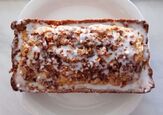










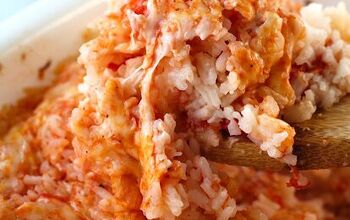
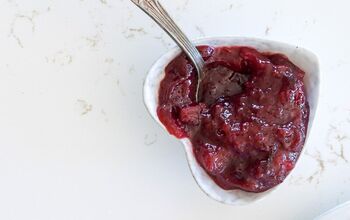
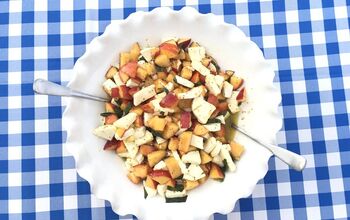

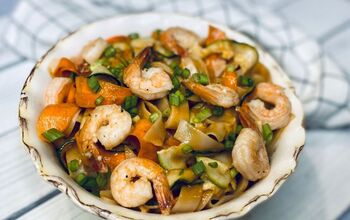




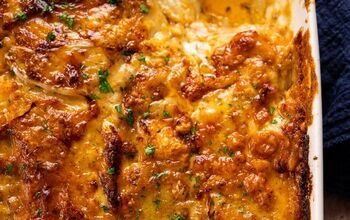


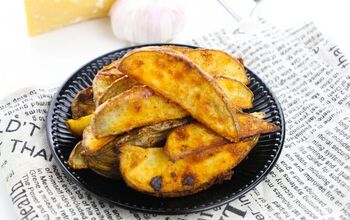

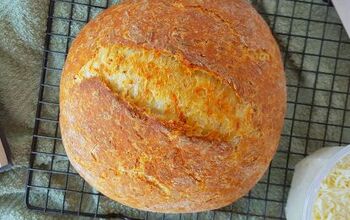

Comments
Share your thoughts, or ask a question!
Love this! My mom is German and makes this especially when plums are in season. Love it with the butter and sugar crumble topping, as this is how she always made it since we were little.
This plum cake recipe does not tell how many plums to use or what size pan to use.
It looks good and I would like to make it.